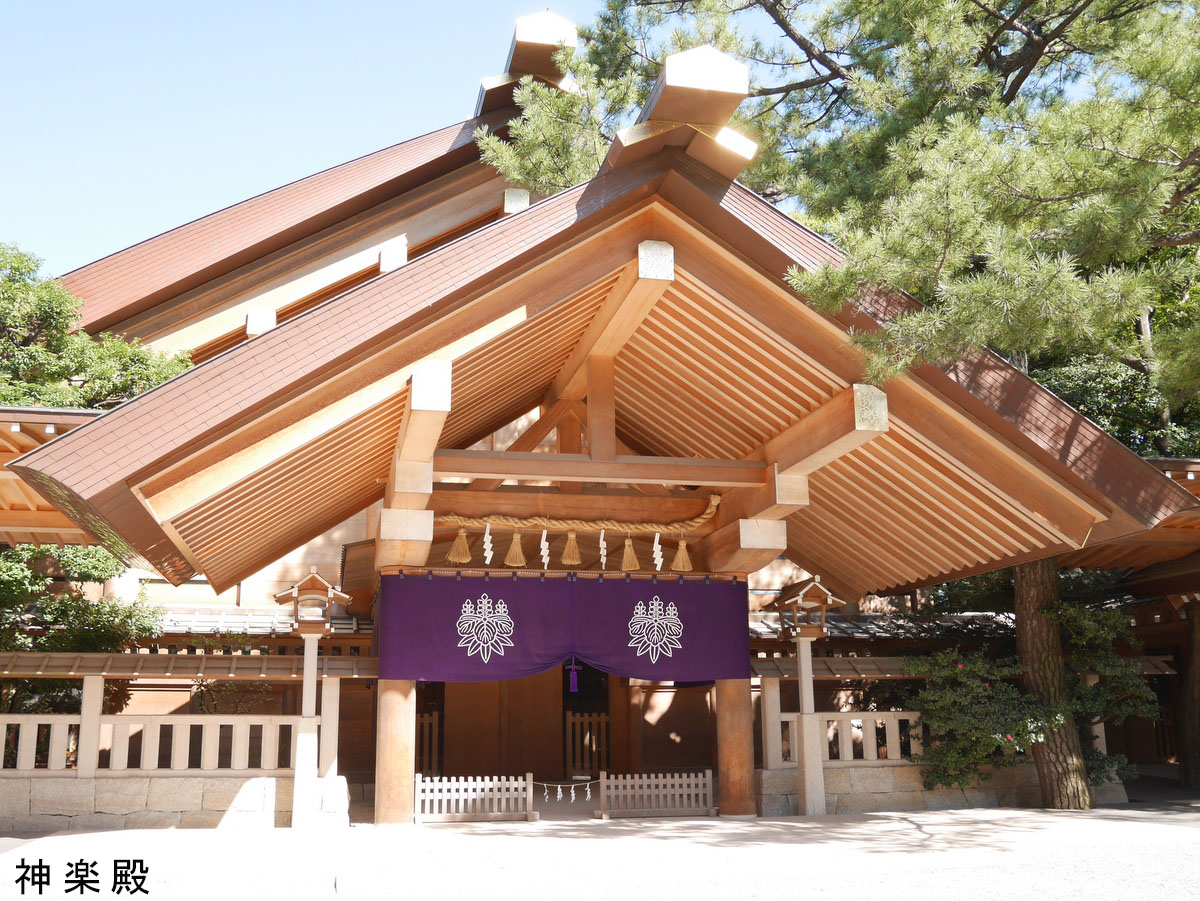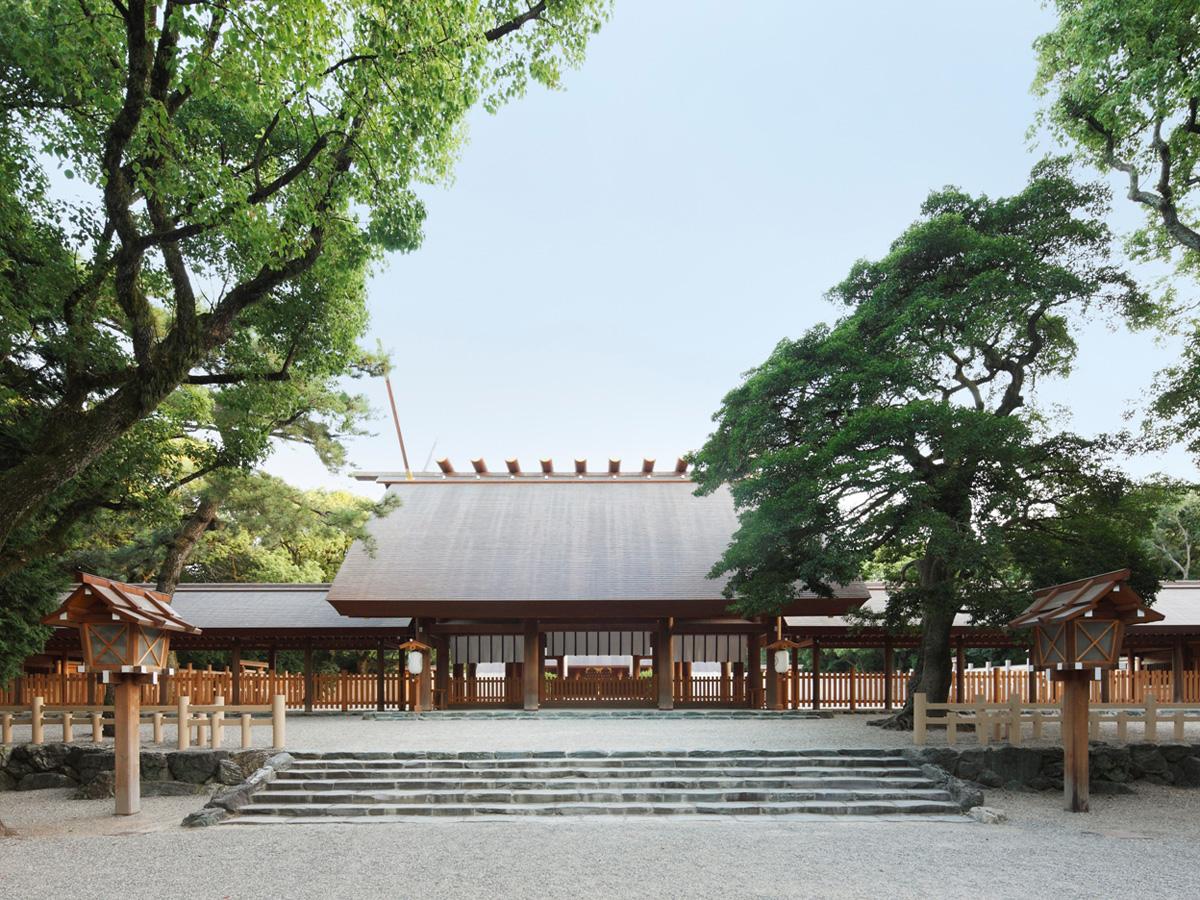


Atsuta Jingu
The venerable shrine that safeguards one of Japan's three Imperial Regalia.
One of Japan's most important shrines, Atsuta Jingu in Nagoya is the sacred repository of the legendary sword 'Kusanagi-no-Tsurugi', a symbol of the Emperor's authority.
History of the Shrine
With a history dating back some 1,900 years, Atsuta Shrine was established specifically to house the sacred sword, Kusanagi-no-Tsurugi. According to the 'Kojiki', the sword was originally found in the tail of the eight-headed serpent, Yamata-no-Orochi, by the storm god Susano'o. It was later passed to the legendary hero Yamato Takeru. During a campaign, he was tricked and trapped in a field of burning grass. He used the sword to mow down the grass, creating a firebreak to save his life, giving it the name 'Grass-Cutting Sword'.
After his adventures, the sword was enshrined at Atsuta by his consort. Throughout history, the shrine has been a recipient of immense patronage from emperors, shoguns, and powerful warlords like Oda Nobunaga and Tokugawa Ieyasu, who would pray here for victory before major battles. Its status as the guardian of an Imperial Regalia places it second only to Ise Grand Shrine in the Shinto hierarchy.
The Enshrined Kami
The central deity worshipped at Atsuta is a collective of the 'Five Great Kami of Atsuta', but the core of this worship is Atsuta-no-Okami, the deified spirit of the sacred sword itself. The Kusanagi-no-Tsurugi is not just an object; it is considered a 'goshintai', a vessel in which the divine spirit of the sun goddess Amaterasu resides. Therefore, worshipping the sword is a way of worshipping Amaterasu.
As a divine weapon, this kami represents the martial authority, legitimacy, and protective power of the Emperor. Prayers to Atsuta-no-Okami are often for victory in competition, protection from harm, and the clarity of purpose needed to cut through obstacles and misfortune.
What to See
The shrine grounds are a peaceful, wooded oasis in the middle of Nagoya. The sacred sword itself, the 'goshintai', is never on public display, its presence being a matter of faith. The main shrine complex has been rebuilt many times throughout history, with the current structures being modern reconstructions in a pure Shinto style, using high-quality Japanese cypress wood, reminiscent of Ise Grand Shrine.
A notable feature is the 'Nobunaga-bei', a 400-meter long mud wall that was donated by the warlord Oda Nobunaga in 1560 as thanks for his stunning victory at the Battle of Okehazama. The shrine also has a treasure hall, the 'Bunkaden', which displays over 6,000 donated items, including ancient mirrors, masks, and swords, showcasing the shrine's deep history and connection to Japan's ruling classes.
Major Festivals
The 'Atsuta Matsuri' on June 5th is the shrine's largest festival. It features imperial messengers, offerings to the kami, and various martial arts and entertainment demonstrations on the shrine grounds. In the evening, there is a spectacular display where 'makiwara'—giant floats decorated with hundreds of paper lanterns—are lit up, and a fireworks display is held. The 'Goyoisai', or 'New Year's Eve Festival', is a solemn and beautiful ritual where priests carry torches into the darkened main sanctuary to welcome the new year.
Support Atsuta Jingu
Your participation helps preserve this sacred site for future generations. Every digital offering contributes to real shrine preservation efforts across Japan.
By making an offering, you become part of a global community honoring Japanese spiritual traditions and supporting the cultural heritage that has been cherished for centuries.